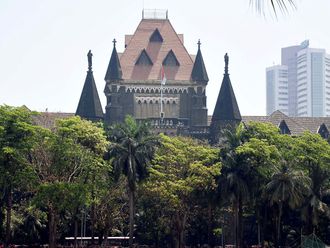Dubai: Are you seeing another dental clinic or cosmetic surgery service provider open up in your neighbourhood? And you start thinking there are already way too many? Then you are not the only one.
“In primary health care, there are many communities and catchment areas that are oversupplied,” said Dr. Ibtesam Al Bastaki, Director of Investment and Partnership at Dubai Health Authority. “We need to look at models in primary care such as walk-in clinics for urgent care and ambulatory care centres — and we are seeing a lot of interest and new investment in these models.”
The bit about oversupply of some health care services is on point — for instance, the Jumeirah neighbourhood has an overcapacity of dental and cosmetic surgery providers. In fact, the DHA’s own “Dubai Health Investment Guide 2018” forecasts some neighbourhoods as likely to have significant oversupply in outpatient rooms between now and 2025.
But further away from prime areas, the need for new outpatient facilities will become acute. In one such area, marked as Sector 3 in the guide, it projects an undersupply of as high as 1,728 rooms this year before dropping to 1,468 rooms in 2020.
It is to remove this lopsided nature of health care investments that DHA plans to bring out a ‘Certificate of Need’ investment guidelines by the third quarter next year. “It will guide investors who would like to expand or invest in health care services linked to genuine opportunities and gaps,” said Al Bastaki. “If investors still choose to invest in specialities that are adequately- or oversupplied, they would be taking on a significant risk if they insist on getting into a category that is overcrowded.
“We would make every attempt to encourage them to invest in investment priorities and this will offer them several advantages.
“For instance, if somebody wants to open a bone-marrow transplant clinic, which does not exist in Dubai, we will take them through a Certificate of Needs process and they might have two- to three-year exclusivity. Then the market can be opened up to allow for more new entrants if there is unmet demand. That would be for the entire city and not just a particular area.”
Such changes should be happening at the countrywide level. And it will not be coming a moment too soon — health care operators are talking about excess capacity starting to cause significant strain on the system. Some small to mid-sized clinics have had to scale down, lay off staff, and even knock on the doors of larger operators to buy them out.
According to Prasanth Manghat, CEO and Executive Director of NMC Health, “The consolidation of stand-alone clinics — backed by a higher level of health care operator — shall be the future in this space. “And the patient is lost to a higher centre — as a double-whammy, the margins are also low to survive in just the primary-care space.”
According to Manghat, a lot matters on when the stand-alone clinic becomes operational. “Health care must follow the communities and not the vice versa,” he said.
But it’s not a strategy that not all operators have followed — many have rushed into neighbourhoods wanting to have the first-mover advantage. Then they realise that the resident base is not growing as fast as they had hoped, which means a longer time to recover their investments. That is, if they are lucky and have the working capital to keep operating.
In an ideal world, primary clinics would be the “gatekeepers” that patients would head to and have themselves checked for the basic ailments or prognosis. But in the UAE, the bigger hospitals are attracting significant traffic in terms of patients wanting to come in for the first referral. The passage of universal medical cover in Dubai and Abu Dhabi has only accelerated the process.
There are rumours that more owners at smaller independent clinics want to exit, and waiting for a favourable offer from a bigger name. Some consolidation did happen in this space in the last two years, but less so this year.
Maybe, the shakeout will start in earnest again next year.
Dubai’s health care priorities
The Dubai Healthcare Authority has prioritised these categories to attract new investments over the next two to three years:
* Chronic disease management;
* Tertiary care for diabetes, cardiology and oncology;
* Long-term and extended care;
* Rehabilitation and physical therapy;
* Mental health;
* Home-based care;
* Urgent-care clinics;
* Diagnostic health and remote monitoring;
* Innovations in primary care; and
* Ambulatory care.
* Between 2012-16, demand for health care services in Dubai increased at a “faster pace in the private setting than in the public sector”, according to the Health Investment Guide 2018. That is at 6.2 per cent versus 2 per cent in public services.
* Dubai’s population is expected to reach between 4.6 million to 5.5 million by 2030. By 2030, non-nationals are expected to reach 91 per cent of the emirate’s population.












